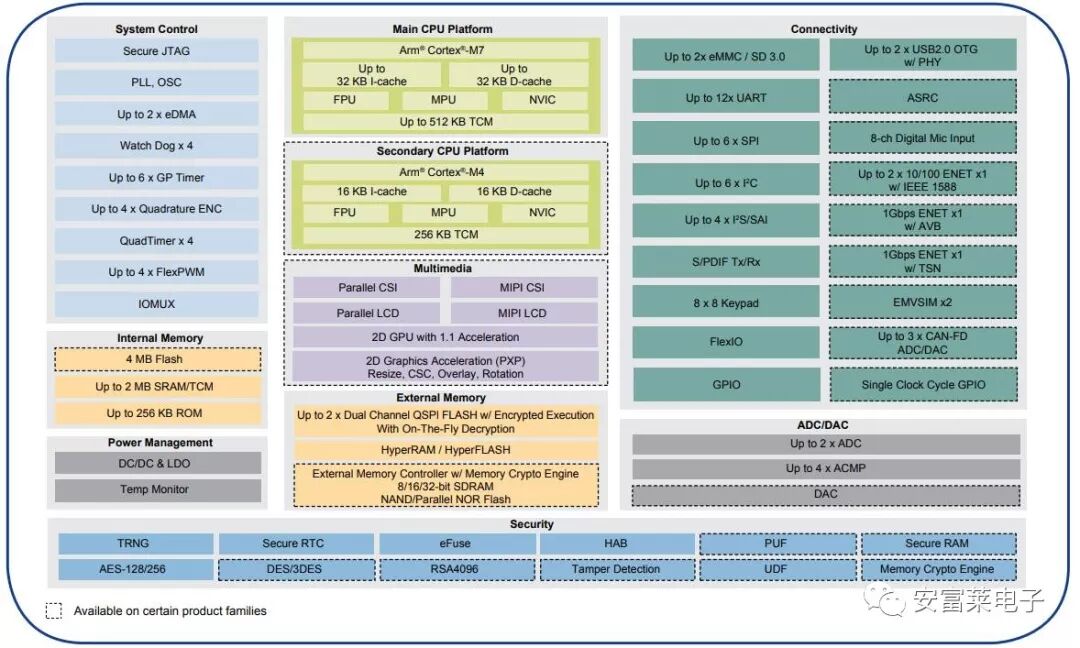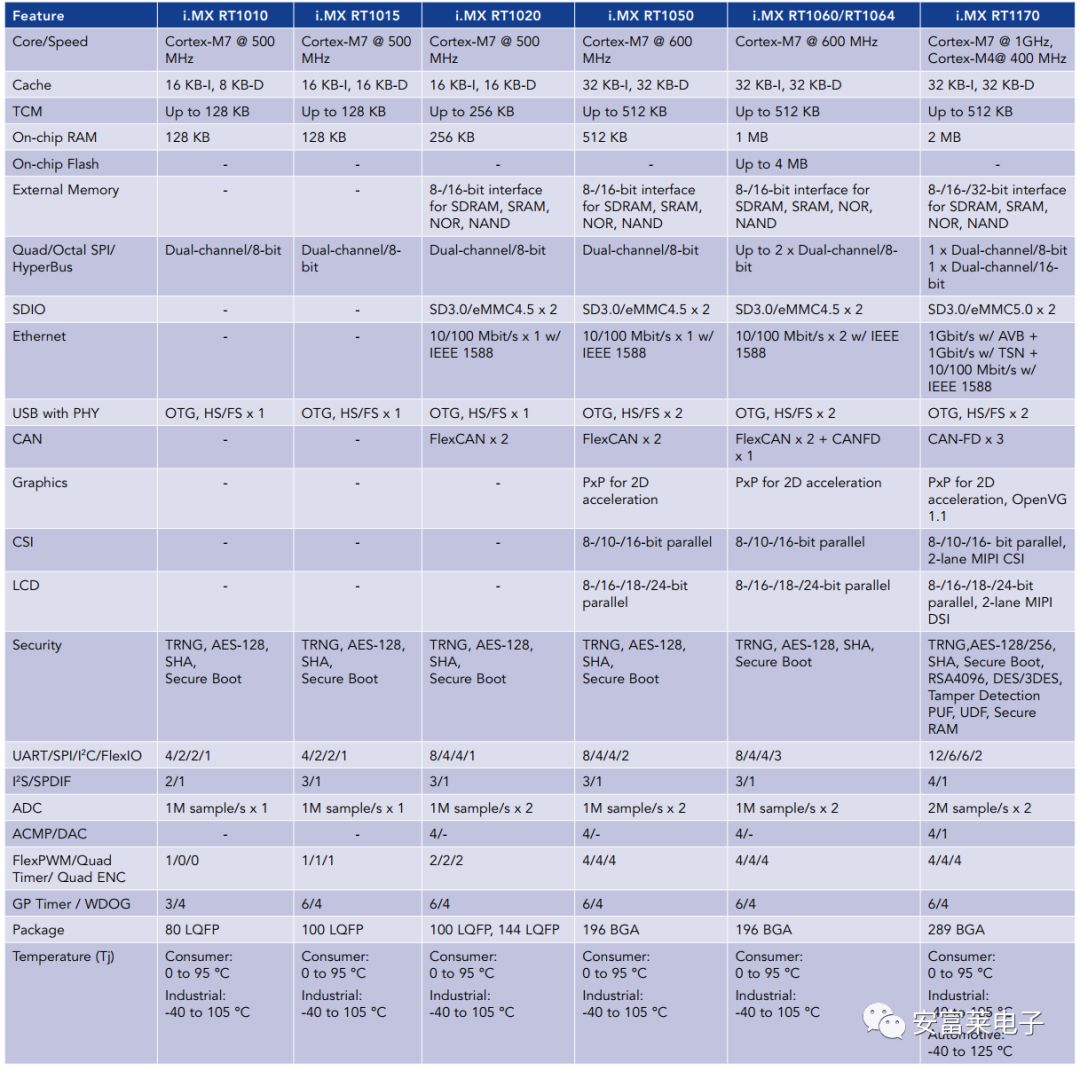Note: The 2019 ARM Tech Conference is approaching, marking the time for various software and hardware manufacturers to unveil new products. NXP is set to showcase the high-end RT1170 with the M7 core.
1. This series finally addresses the debugging issues encountered with the previous RT105x, providing up to 2MB of general-purpose SRAM. Whether for program debugging or actual program execution, everything can be handled within this 2MB. This is crucial; microcontrollers must emphasize simplicity and ease of use, and they have achieved this. 2. This series features dual cores: M7 and M4, with the M4 core running at 400MHz and the M7 core at 1GHz, scoring 6468. This score surpasses many A-series processors; for instance, the strongest in the i.MX6 series, the i.MX6Q, with its four 1.2GHz A9 cores, only scores around 10,000. 3. Peripheral highlights: (1) Two Gigabit Ethernet interfaces and one Fast Ethernet interface. (2) eMMC now supports version 5.0. (3) Interrupt response time has been reduced to 12ns, down from 20ns. (4) Equipped with 12 serial ports. (5) Supports 720p display refresh rates of 60Hz and 1080p display refresh rates of 30Hz. (6) This release includes automotive-grade (-40 to 125°C), industrial-grade (-40 to 105°C), and consumer-grade (0 to 95°C). The automotive-grade will require AEC-Q100 certification, and this temperature range falls under Grade 1. In terms of current application directions, whether for microcontroller AI, DSP digital signal processing, or time-critical applications, this series has significant advantages, as we can conveniently develop high-performance applications in a microcontroller manner.

Block Diagram:
